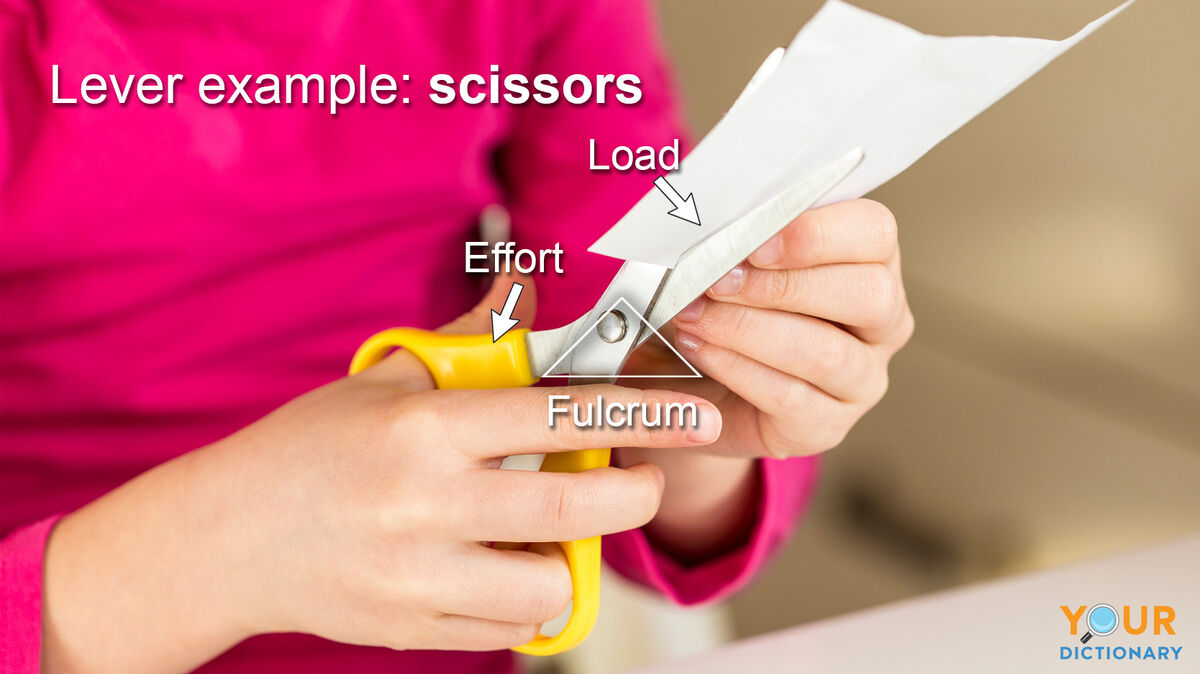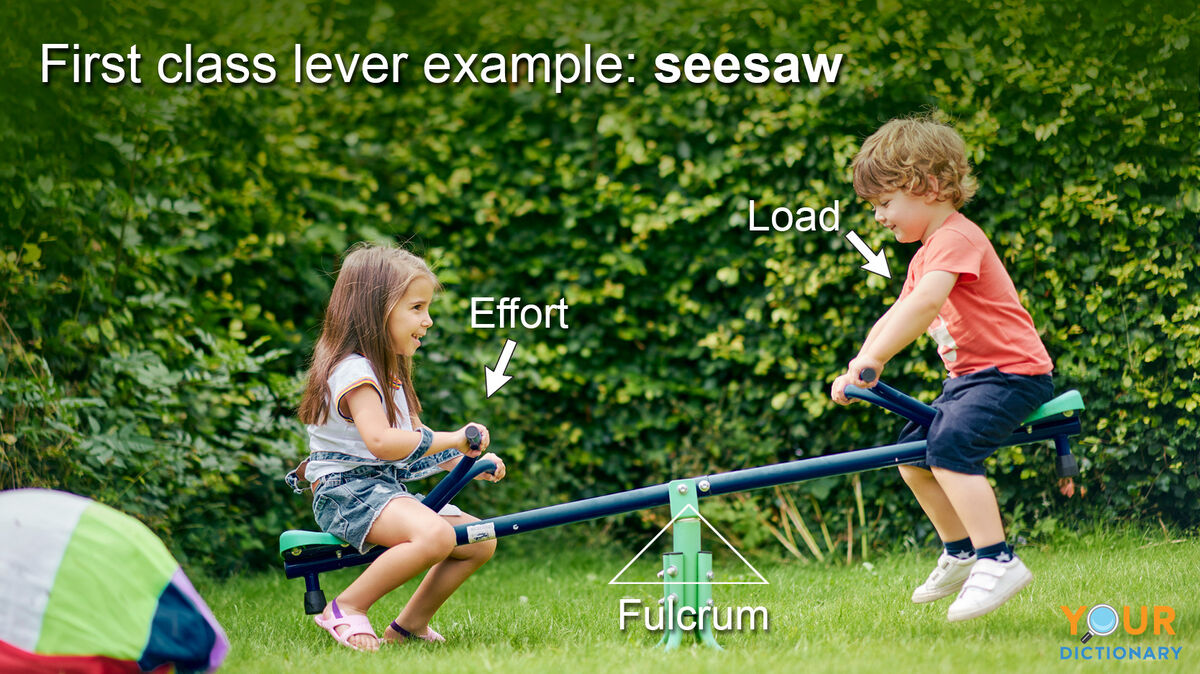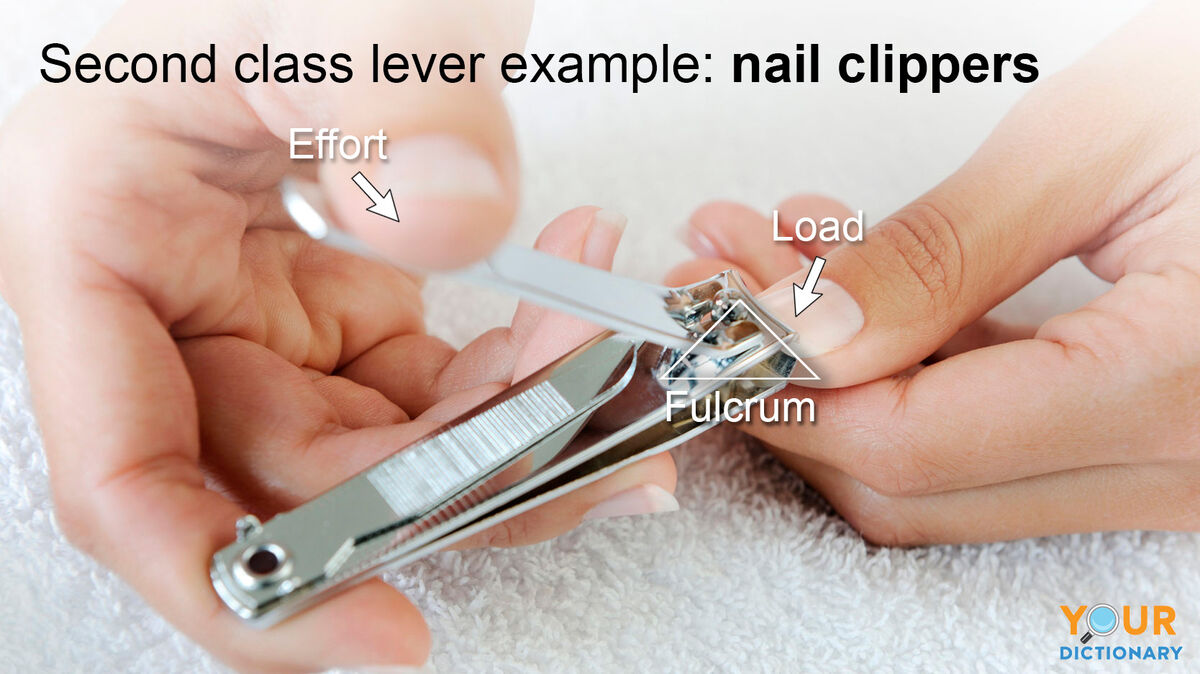
When you think of a lever, you may think of a piece of construction machinery or laboratory equipment. But like most simple machines, levers are part of your everyday life — and in many ways, they make your everyday life possible! Keep reading for examples of levers that you see every day, including in the house, in the garden and in the sports world.
First Class Lever Examples
Levers in the first class category are probably what you imagine when you hear the word "lever." Like all simple machines, levers apply force to a load to do work. Levers use a beam balanced on a fulcrum, which changes the direction of the force to act on a load. First class levers have the fulcrum in the middle of the beam, the force on one side, and the load on the other. The effort is equal to the load, meaning that the force you put in (the input) comes out the same on the other side (the output).

Examples of levers in the first class category include:
- car jack - A car jack applies the force from your hand to push a car up. The fulcrum is between your hand and the car, making it a first class lever.
- claw end of a hammer - When you're using a hammer to pull a nail out of wood, you're using it as a first class lever.
- crowbar - Like the claw end of a hammer, a crowbar's fulcrum is between the effort (your hands) and the load (what you're trying to pry).
- gardening shears - The shears are joined in the middle (the fulcrum), and the force applied from your hands causes the other end to act upon the load (the shrub or tree that you're pruning).
- light switch - When you push down one side of the light switch, the effort carries over the fulcrum and the other side comes up.
- pliers - The item you are gripping or twisting is the load, and the bolt in the middle is the fulcrum.
- scissors - The blades of a set of scissors are joined in the middle (the fulcrum). When you act on one side, the action is performed on the other.
- seesaw - A seesaw is the classic example of a first class lever. It has a pivot point in the middle, the load on one side and the effort on the other.
Second Class Lever Examples
Second class levers also apply force from one side of a beam to another. However, the fulcrum is on one side of the beam, rather than in the middle. The load is in the middle of a second class lever. The effort is farther away from the load, and the load is greater than the effort — which means that you don't need to work very hard to make these levers perform a task.

Examples of levers in the second class category include:
- bicycle hand brake - When you need to slow or stop your bike, you pull the hand brake. The force from your hand is transmitted through the lever and into the brake cables. (Some bike brakes, such as roller cam and U-brakes, are first class levers.)
- bottle opener - A handheld bottle opener uses a straight beam balanced between your hand (the force) and the bottle cap (the load).
- car door handle - When you lift the handle of a car door, it applies force to the hinge, which is on the other side of the beam.
- crash bar - When you leave a public building, you may find a crash bar instead of a door handle. Pushing down on the lever makes your effort work on the door latch, which opens the door.
- door - Opening a door is also a second class lever function. It uses the hinge as a fulcrum to help the door swing open.
- nail clippers - Like all second class levers, nail clippers have the effort and the fulcrum at opposite ends of the beam (the top clipper).
- stapler - Just like nail clippers, the beam on the top of a stapler uses the force from your hand to place a staple into the paper (the load).
- wheelbarrow - The load is in the middle of the wheelbarrow, you (the force) are moving it, and the wheel's axle (the fulcrum) is on the other side.
Third Class Lever Examples
Levers in the third class category don't look much like levers at all. However, when they are used with your hands, they perform the same work. One hand works as the fulcrum holding the beam in place, and the other applies force to the load. The effort is close to the load, and it must be greater than the load itself. That means you are putting in more work than the lever is performing.

Take a look at these examples of levers in the third class category:
- baseball bat - Look at a batter in slow motion. One hand holds the bat while force from the entire body swings the bat with the other hand, working on the load (the ball).
- broom - One hand grips the broom and the other applies force to sweep debris on the floor, which is the load.
- chopsticks - The chopstick closest to your hand works as the fulcrum as the other chopstick (the beam) uses the force from your fingers to pick up food.
- golf club - Just like a bat, a golf club functions as a third class lever, using the force from one hand to swing.
- hammer end of a hammer - When you're hammering a nail into a board, you're using a hammer as a third class level. Your wrist is the fulcrum, and the load is the wood that you are driving the nail into.
- rake - Similar to a broom, you use a rake by applying force from one hand and balancing it in the other (the fulcrum).
- tennis racket - When you hit a tennis ball with one hand, your wrist acts as the fulcrum. When you hit it with two, your second hand is the fulcrum.
- your arm - You've got two levers attached to your body! Any time you pick up an item, your elbow works as the fulcrum, your forearm is the beam, and your muscles carry the effort forward to work on what you're picking up (the load).
Levers Help Us Do Work
We use simple machines like levers to make all kinds of work easier. Whether you're prying open a door with a crowbar, hitting the winning home run or turning off the light switch in your room, levers help you perform the work needed for physical activity. Learn more about simple machines with these wheel and axle examples used in everyday life. To learn more about physics and energy, check out some everyday examples of different types of energy.